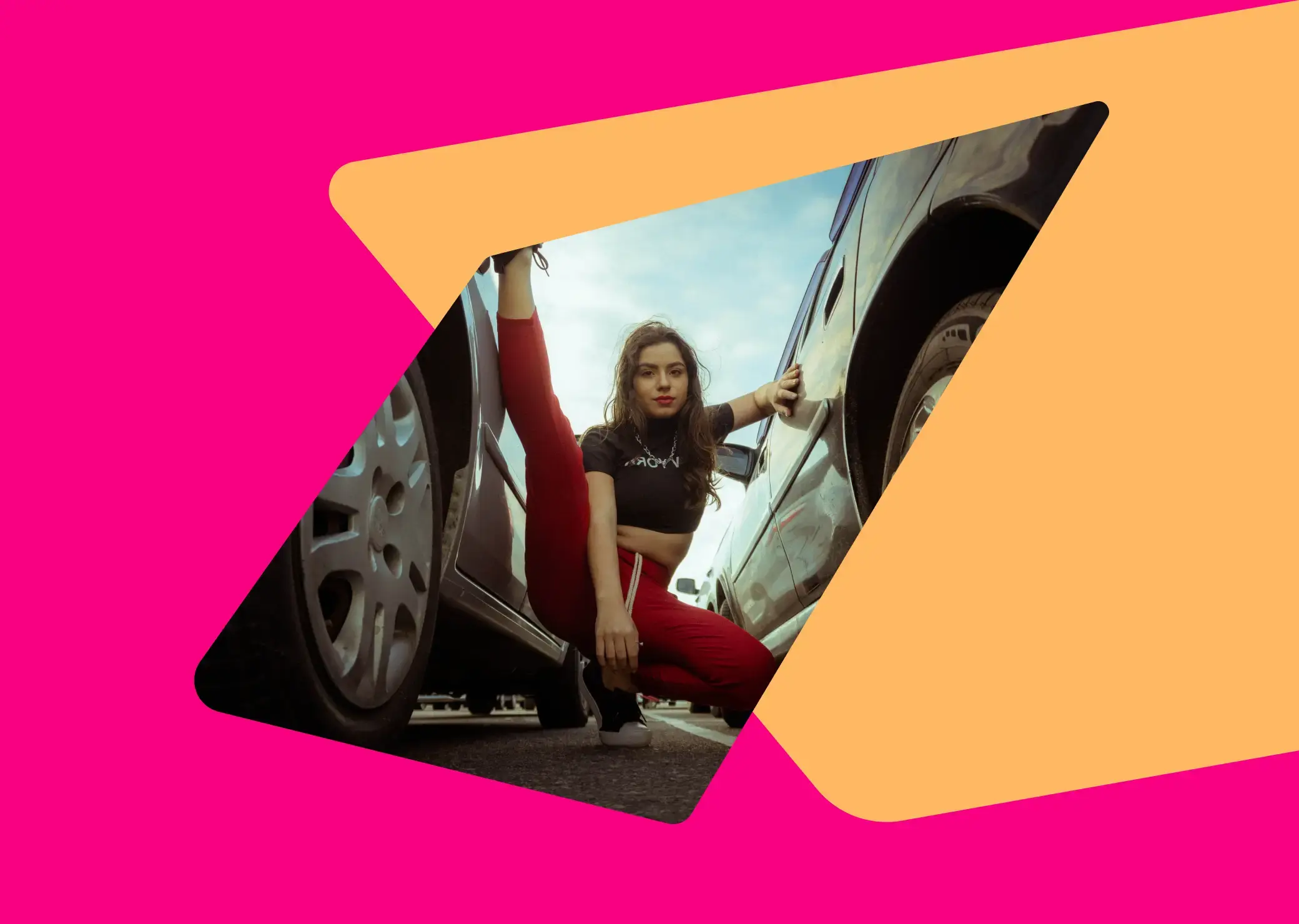- Carmoola
- Blog
- Car Finance
- How does part exchanging my car work?
- 🗞 Car Finance
- Last updated: Mar 28, 2025
- 7 Min Read
How does part exchanging my car work?
Written by

Verified by


See how much you can borrow in 60 seconds
| Representative Example | |
|---|---|
| Loan amount | £10,000 |
| Interest rate | 13.9% APR |
| 54 payments of | £246 |
| Total cost of credit | £3,284 |
| Option to purchase fee | £1 |
| Total payable | £13,285 |
Amid all the excitement of upgrading to a new set of wheels, one of the concerns you might have is what to do with your existing car. It’s served you well, but it’s now time for it to head to pastures new.
You could try selling it privately, but part exchange is a popular option that could prove quicker, easier and more convenient, even if it means you don’t secure the best possible price for your pride and joy.
In a nutshell, a part exchange or trade in is a way of selling your car that also gives you a discount on your next vehicle.
Almost every dealership in the UK will offer part exchange, but is it the right choice for you?
Let’s break down how it works in more detail:
How does part exchanging work?
Once you’ve decided it’s time for a fresh set of wheels and have found a new model that gives you goosebumps, you can offer up your existing car for part exchange.
You’ll need to negotiate with the dealer directly. They will look over your existing car and make you an offer. This amount might not be as much as you’d be able to get by selling your car privately, but it should still be a fair price based on the car’s value.
If you’re happy with the offer – or have negotiated to arrive at a figure you’re both comfortable with – you’ll likely sign an agreement confirming the terms of the trade. The amount you agreed will then be subtracted from the price of your new car and you’ll need to pay (or get finance to cover) the remaining balance. It’s as simple as that.
How do dealers value my current car?
There are a range of different factors that can influence the value of your car in the dealer’s eyes (even if it’s priceless to you!)
Keep in mind that you don’t have to accept the price offered, but the final figure will usually be impacted by:
- The overall used car market and demand for your car’s make and model
- The car’s condition
- The number of miles on the clock
- The car’s age
- Its service history
- Any modifications or premium features
You can get a good idea of its potential value before driving down to the dealership by checking similar used car listings online as well as entering your car’s details into an online car valuation tool.
Should I part exchange my car?
Deciding whether to part exchange your car is a personal choice that will depend on your individual circumstances and priorities.
Part exchange could be the best option if:
- You want a quick and hassle-free process
- You’ve already fallen in love with a new set of wheels
- You don’t have a deposit to put towards your next car
- Your finance term has already ended
- You want to reduce the amount you need to pay for your next model
However, it’s worth keeping in mind that it might not be right for you if:
- You want to get the best possible price for your existing car
- You have outstanding finance, and your car is worth less than the settlement figure
- You don’t want or need to buy another car
Can I part exchange my car if there’s outstanding finance on it?
Whether you’ve bought your car on hire purchase (HP) or personal contract purchase (PCP) finance, it won’t be officially all yours until your agreement comes to an end and you’ve made all the required payments (including the balloon payment in a PCP agreement). Until then, the car is owned by the lender.
You can’t legally offer a financed car for part exchange until you’re its legal owner – and that means settling the loan first. To do this, you’ll need to request the settlement figure. You can ask your lender for this at any time and will typically be made up of the outstanding balance on your agreement plus any interest and charges that you might have to pay to end the loan term early.
In a part exchange, the dealer might agree to liaise with your lender and settle the finance on your behalf. What happens next will all depend on the equity available – your car’s value vs. the settlement figure.
If your wheels are worth more than the settlement figure, you’ll be in positive equity and can put the extra funds towards your car purchase (woo hoo!) On the other hand, if it’s worth less and you’re in negative equity, you might need to agree to pay the difference before the dealer will accept the trade.
What happens to my old car when I part exchange it?
Once you’ve signed over ownership of your old car to the dealer, what happens next will depend on their policy.
In most cases, they will either try to sell it at a car auction or add it to their forecourt to hopefully find a new owner. However, if your old car is approaching the end of its life and has little or no resale value, it might get sent to the great scrapheap in the sky.
What documents do I need to part exchange my car?
Different dealers can ask for different documents, but you’ll typically need to provide:
- Your car’s V5C – otherwise known as its logbook
- A valid MOT certificate
- Its service history (ideally a complete one)
- The owner’s manual
- The original purchase receipt (if you still have it!)
All these documents can help boost the value of your car and ensure you receive the best possible price in your part exchange.
Is it better to part exchange or sell my car privately?
When weighing up the pros and cons of part exchange vs selling a car privately, it often comes down to a choice between convenience and price. The best option for you will depend on which is most important to you.
Selling a car privately will usually mean you’ll receive a better price for it than you would with a part exchange, but that extra cash isn’t completely catch-free. You’ll need to list your car for sale, arrange viewings with prospective buyers, and negotiate the final deal. This also can come with risks if the buyer turns out not to be trustworthy. However, if you don’t want to buy another car or want the flexibility to choose your next set of wheels from an online listings site or private seller, then this might be the best way forward.
In contrast, part exchanges will usually be quick and relatively easy, but you might not get the best possible price. The dealer will know that you’ve fallen for a car on their forecourt and are willing to sacrifice some potential profit for the convenience of them taking your existing wheels off your hands. If you don’t feel confident about selling a car privately, part exchange could also offer peace of mind.
FAQs about part exchanging your car
Should I MOT my car before part-exchanging?
Should I clean my car before part-exchanging?
See how much you can borrow in 60 seconds
| Representative Example | |
|---|---|
| Loan amount | £10,000 |
| Interest rate | 13.9% APR |
| 54 payments of | £246 |
| Total cost of credit | £3,284 |
| Option to purchase fee | £1 |
| Total payable | £13,285 |
Related articles
Can you drive in the UK on a foreign licence?
If you’re new to the UK, you might be keen to get behind the wheel to explore on the open road. You can usually drive in the UK...
What happens if my car is written off and it’s still on finance?
Accidents happen. When split-second decisions and challenging conditions make driving difficult at the best of times, even the...
Which credit reference agencies do lenders use?
When applying for car finance, your credit score can make a significant difference to the APR you’re offered, your repayment...

.webp?width=832&height=592&name=customer-support%20(1).webp)










.webp?width=400&height=285&name=online-shoppers-with-dog%20(1).webp)


.jpg?width=500&height=356&name=Vintage%20car%20going%20to%20an%20old%20town-1%20(1).jpg)





